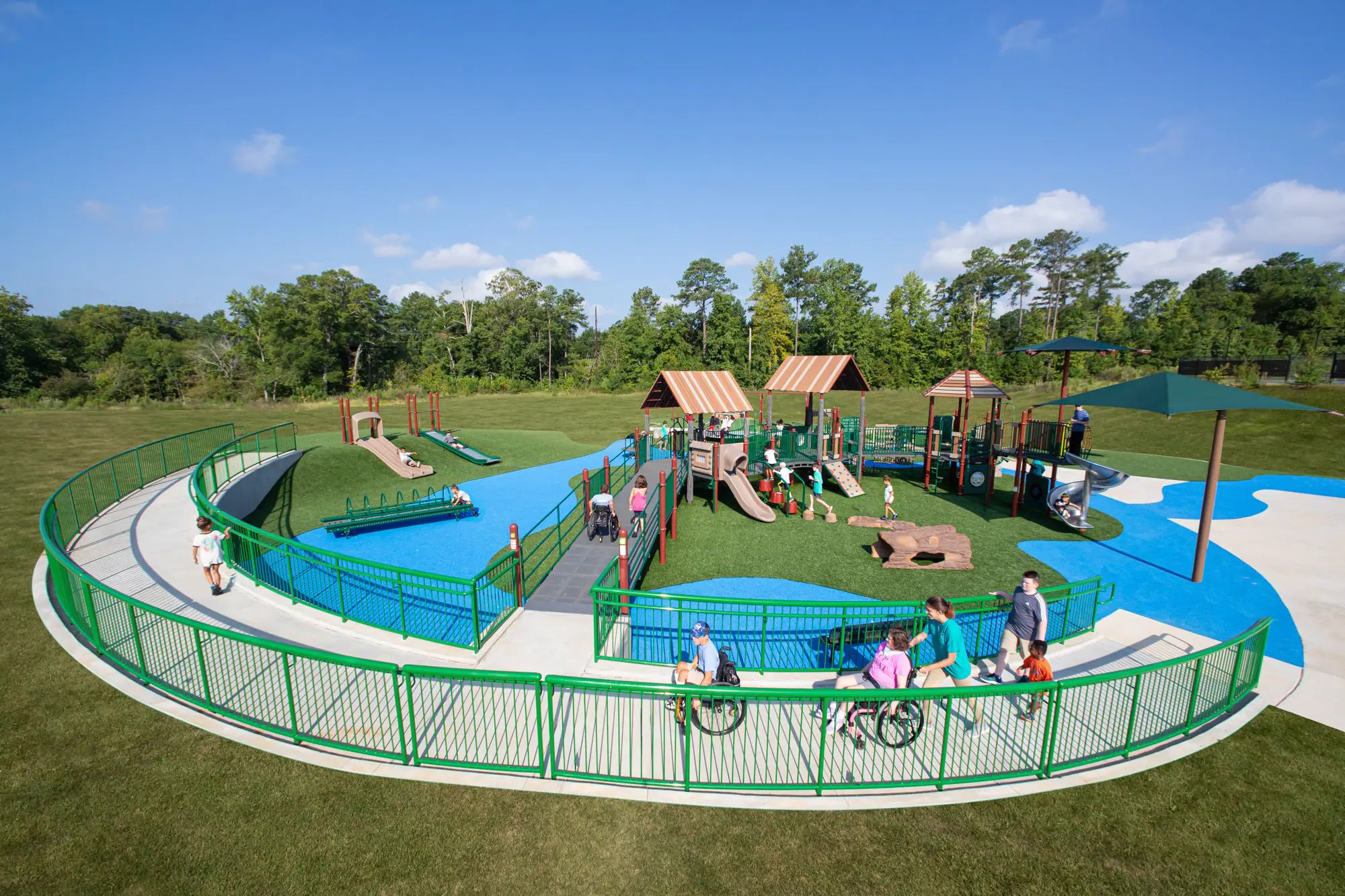Tips for Making A School Playground Inclusive
Posted by May Recreation Content Team on

Making a school playground inclusive is an all-in intentional effort. It’s more than building a ramp. While providing universal access is a major part, it's only a head start. The structures and equipment within the area need to encourage and challenge every child no matter what his or her abilities.
And just as in the classroom, where some children learn by listening, others must watch, and still, others to feel and manipulate, an inclusive, for a play area to be inclusive it needs to provide a variety of sensory play experiences. The best way to do this is to follow the five fundamentals that encourage inclusive exploration and play.
Multi-Sensory Appeal
Play is the pathway by which all children explore the world, and each child does so at his own pace. Since some individuals are more adventurous than others, the structures in an inclusive playground should encourage participation and look like fun. But on another level, they should also help kids build physical strength, hone their motor skills, and contribute to optimal cognitive functioning.
An Atmosphere of Encouragement
Inclusive playground equipment will encourage children to try it out regardless of age. Unlike playgrounds where there is a section for preschoolers and kindergartners and another for those in the primary and middle grades, an inclusive playground groups equipment by function.
For example, climbing structures of varying heights and challenges are in one area; roundabouts differing in speed and ease of push off grouped in another section; seesaws and graduated-level balancing structures in yet another. By grouping equipment by function rather than size, older children with challenges will not feel that they are playing in the "baby playground." Conversely, those who are more adventurous will have a chance to try out their abilities on challenging equipment regardless of their size or age.
Equal Accessibility
Children on crutches, in wheelchairs, or wearing braces will be able to enter the playground with minimum teacher assistance. This can best be accomplished with intentional design features such as
- Seamless shock-absorbing padded surfaces
- Wide-open routes to and around equipment
- Equipment that provides level or smoothly sloping ons and offs
Spectrum Comfort
Children on various autism spectrum levels and those who experience sensory integration disorders will feel comfortable approaching the playground if they know it includes quiet cozy areas and established perimeters paths and fences that allow them to orient themselves in space and know there's a way in and a way out.
Suitability for All Stages of Play
An inclusive playground will provide welcome and comfort to all levels of development and stages of play. The design and arrangement of areas will suit those who prefer solitary play or feel more comfortable watching rather than participating as much as they suit those who engage in parallel play, associative play, and cooperative play.
Putting together an inclusive school playground is a win-win situation. It allows all the students to play together and learn from one another no matter their level of ability or disability. Furthermore, it allows the school to comply with the requirements of the ADA.
At May Recreation, we believe that every kid deserves to play, feel exhilarated and experience new environments. That’s why we offer a variety of playground solutions that provide accessibility and sensory benefits to create truly inclusive play spaces that are exciting, and challenging and help kids of all ages and abilities enjoy playing together. Contact us today to begin creating the best inclusive playground!
